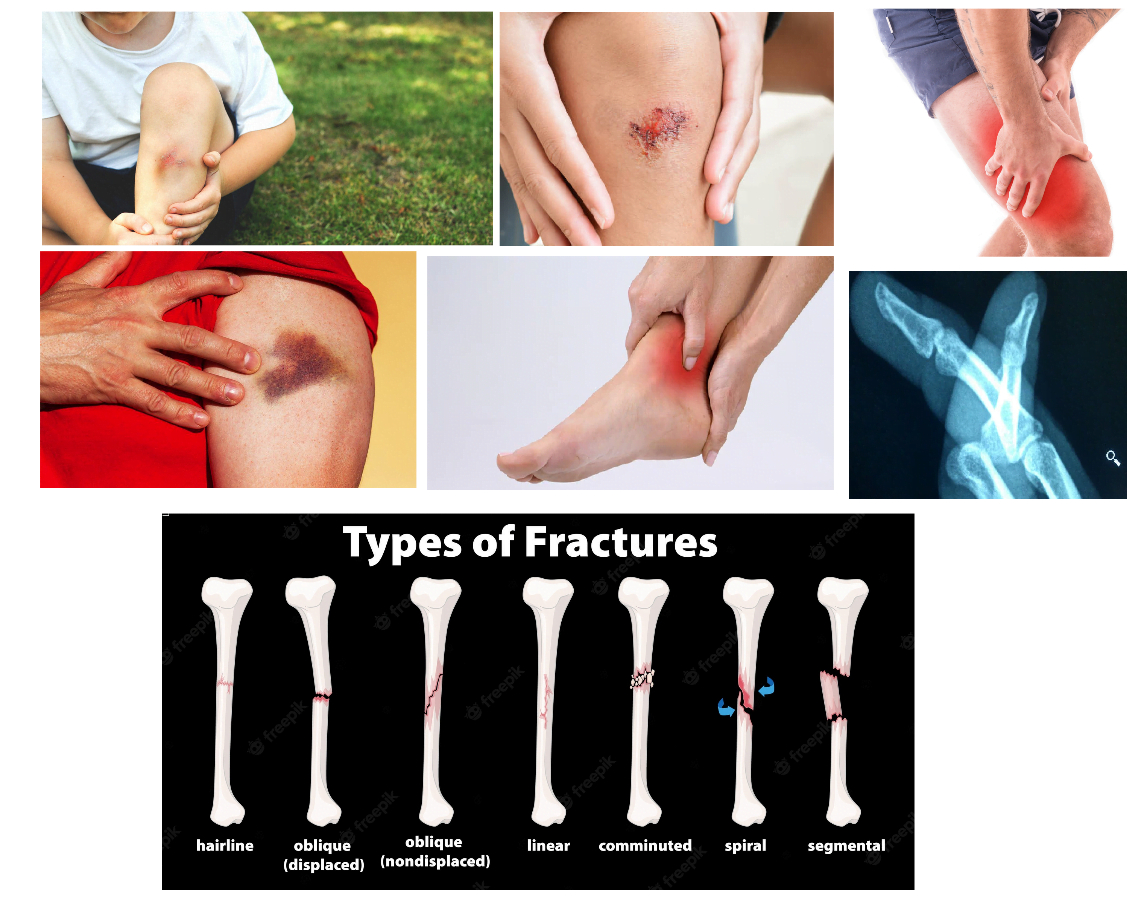NCERT Solutions for Class 12 Physical Education Chapter 7 Physiology and Injuries in Sports: Best Solution for Class 12 Physical Education Chapter 7 Physiology and Injuries in Sports
NCERT Solutions for Class 12 Physical Education Chapter 7 Physiology and Injuries in Sports
Physiology And Sports: Physiology and sports are about improving performance by knowing how our body works during exercise. By using scientific principles, we can train our bodies in a better and effective way.

Our body has a complex function of various body systems. We need proper functioning of various systems, which makes us more efficient.
Physiology deals with the function of the body system and its effects. Through regular exercise, the physiological function of the body system can be improved and thus body efficiency increases a lot.
Physiological Factors Determining Strength
Strength is the ability to overcome resistance.
- Muscle Covering: The sarcolemma covering increases the muscle cross-sectional area and helps in strength component
- Size of the muscle: Every muscle is of different size. Long muscles have more potential to generate strength as compared to small muscles.
- Muscular contraction: Concentric and Eccentric muscular contraction regulates our muscular action in controlled manner
- Neuromuscular response: Impulses produced by Nervous System controls muscle contraction.
- White muscle fibres: White muscle fibres have more connective tissues and they bring fast and strong contraction
- Age: Strength of muscles is maximum in age between 20- 40 years
- Gender: Male have more strength as compared to female.
Physiological Factors Determining Endurance

Endurance is the ability to resist fatigue
- Maximum Oxygen Intake (VO2 Max): More amount of oxygen taken up and utilized during exercise will improve endurance capacity
- Pulmonary Diffusion: It is the exchange of oxygen and carbon dioxide between lungs and the blood. More and faster this diffusion improves endurance
- Cardiac Output: Ability of heart to pump out in one minutes. More output helps to circulate blood to working tissues, thus endurance is enhanced
- Lactic acid tolerance: More lactic acid tolerance delays fatigue and tiredness, which improves endurance
- Energy reserve: The endurance capacity depends upon the muscle glycogen and sugar level. More energy reserve enhances endurance capacity
- Red muscle fibre: The red muscle fibre (slow twitch muscle fibre) can carry more oxygen, thus helps Aerobic endurance.
Physiological Factors Determining Speed
Speed is the ability to do work at a faster rate
- Fast twitch muscle fibre: The greater the percentage of fast twitch fibre faster is the speed
- Neuromuscular response: Higher and faster the neuromuscular response, faster and stronger the muscular contraction, which increases speed
- Flexibility: Higher the range of movement determines higher speed.
- ATP energy store: More ATP (Phosphogen) stores, faster is the energy release, which helps to improve speed.
Physiological Factors Determining Flexibility
Flexibility is the ability of joints to move in the maximum range.
- Joint structure: Joint attached to various muscles, ligaments, cartilages and tendons, which makes the joint strong and flexible.
- Ligament Elasticity: Ligament connects two bones. More the elasticity of ligament, greater is the flexibility of joints
- Age and gender: Flexibility decreases as the age progresses. Females are more flexible than males.
- Diseases: Many types of diseases and injuries affect flexibility.
Effect of exercises on various systems
Exercises are an integral part of our life. It increases various demands on our body, as a result, our body starts compensating demand by increasing muscle tissues and neural connections.
Exercises Physiology optimises our body’s cardiovascular, respiratory, nervous, muscular, and endocrine systems.
Effect On Cardiovascular System
- Increase the size of heart: With regular exercises enlargement of heart take place, as a result stroke volume increases.
- Increase Cardiac Output: Exercises increase the Cardiac output which increases the blood flow. More blood is pumped out
- Resting Pulse Rate Decrease: Regular exercises decrease the resting Pulse Rate, as a result heart gets more resting time
- Increase in haemoglobin: Exercises increase haemoglobin content in blood, which can carry more oxygen
- Decrease Blood Pressure: Regular exercises decrease blood pressure by upto 10mm Hg at rest
- Faster healing: The increased blood circulation makes healing faster
- Reduction in Cholesterol: Exercises reduce cholesterol level of the blood which reduces heart attack risk.
- New Capillaries are formed: Regular exercises develop new Capillaries. This brings more blood to working tissues.
- Return to normal pulse quickly: The pulse return to normal quickly.
Effect on Respiratory System
- Increase in tidal volume: With regular exercises tidal volume and vital capacity of lung increase, by which more oxygen reaches to working tissues.
- Increase in Aerobic Endurance: With regular exercise less amount of lactic acid is produced which results delayed fatigue
- Decrease in rate of respiration: Regular exercises decrease respiration during rest
- Improves Metabolic System: Exercises increase metabolic reaction for energy production with less consumption of oxygen.
- Respiratory muscle become strong: The respiratory muscles become strong to work for longer duration
- Resistance power increases: Regular exercises improves our immune system, thus common health problems like cold, cough, Asthma, etc can be prevented
- Increase in Residual Air Volume: Residual Air is the amount of air left in the lungs after exhalation. Exercises increase Residual Air capacity.
- Increase number of Alveoli: Exercises increase number of Alveoli and activates unused alveoles.
Effect on Muscular System

- Change in shape and size of muscle: Regular exercises change shape and size of muscle, thus improves muscular capacity.
- Faster recovery from injury: Trained muscle can recover from injury fast
- Formation of more Capillaries: Exercises increase number of Capillaries, which helps faster blood circulation
- Delays fatigue: Regular exercises increase the ability of muscles to tolerate more lactic acid for longer duration, which delays muscle tiredness.
- Faster response: In trained muscle, the stimulus travel faster, thus muscle actions and responses are faster.
- Efficient use of diet: Trained muscles can efficiently use all nutrients
- Desired strength develops: Systematic and scientific training can develop the desired strength and endurance
- Better Neuromuscular Coordination: Regular exercises improves the neuromuscular coordination by which various skills can be performed efficiently
- Increase in Aerobic and anaerobic endurance: Trained muscles have more Aerobic endurance, therefore, capacity of muscle increase to work for longer duration without fatigue.
Sports Injuries:

In sports, injuries are common and they can occur to anyone and at any time. Injury causes damage to any internal and external parts, which affects the health of individuals. It can be classified as:
- Soft Tissue Injuries: Skin injuries and muscle injuries.
- Hard Tissue Injuries: Fracture and dislocation.
The Modified Push-Up test is used to measure upper body strength, endurance and trunk stability
Soft Tissue Injuries

Contusion
It happens due to direct hit by any solid thing. In contusion blood vessels in the muscle are broken and sometimes bleeding may occur. Stiffness and swelling are common features at the site of contusion
Abrasion
Abrasion occurs due to friction or fall over the area where the bone is very close to the skin. When someone falls on the ground, layers of skin rub off due to friction. It generally occurs on a rough surface.
Bruises
Bruises are not seen because the upper skin remains unaffected, but inner tissues are damaged. Beneath the skin blood collects near the surface skin.
Bruises appear reddish at the beginning and turn blue after a few hours.
Strain
Strain is a muscle injury which can be mild as well as severe. It is a tearing of a muscle or a tissue connecting muscle to bone (tendon).
It occurs usually due to fatigue, overuse, or improper use of a muscle. Strains can happen in any muscle; sometimes complete muscle gets raptured.
Chronic strains are usually caused by moving the muscles and tendons in repetitions.
Sprain
It is a ligament injury. It occurs due to overstretched or tearing of the ligament. Falling on ground, twisting or getting hit can force a point out of its normal position.
In this injury swelling, inflammation and severe pain are common symptoms. Generally, sprain occurs at write and ankle joints.
First Aid and Management of Soft Tissue Injuries

The treatment referred to as PRICER
P = Protection, R = Rest, I = Ice, C= Compression,
E = Elevation, R= Rehabilitation
This test is to measure the Cardiorespiratory fitness of the athlete by measuring VO2 Max ( Maximum Cardiovascular Ability)
Rest: Completely restrict the movement
Compression: Bandage should be applied to reduce swelling
Elevation: Elevate the affected part above the level of the heart.
Rehabilitation: Perform some exercise to regain strength.
Hard Tissue Injuries

(Bones and joint injuries)
Dislocation
It is a joint injury. In this injury the ends of bones are forced out from the normal position. This type of injury is very painful, it temporarily deforms and immobilizes your joints. Dislocation is most common in the shoulders and fingers.
A dislocation occurs in contact sports or sports which involves falls like gymnastics, wrestling, football, etc.
- Dislocation of Shoulder joint: Dislocation of Shoulder joint may occur due to sudden jerk or fall on the hard surface. The end of the numerous comes out from the socket.
- Dislocation of Wrist: A miscalculated landing can cause a dislocated wrist, especially when a person uses his hand to stop his fall.Test Administration
Fracture

A fracture is a complete, partial break or cracks in a bone. There are many types of fractures occurs
- Simple Fracture: In this Fracture bone is broken at one place without any wound.
- Compound fractures: In this Fracture skin and muscles are also damage along with fractures.
- Complicated Fracture: In this Fracture a bone is broken and damages the internal organs.
- Green stick Fractures: This kind of fracture occurs when a bone bends and cracks. These fractures are generally seen in children because their bones are very soft and delicate. Whenever there is any stress on the bone, it is bent.
- Comminuted Fracture: When any bone is broken into three or more pieces.
First Aid

First aid is the first help that is given to the wounded or accidental victim before taking him to the hospital. It is temporary and immediate care given to a victim of an accident or sudden illness.
Objectives of First Aid
- To preserve life: Every possible effort is done to save the life of a wounded person with the help of First Aid.
- To Alleviate pain: Major objective is to reduce unbear pain.
- To prevent the condition from worsening: It provides to prevent the condition from worsening before he gets the help of doctor.
- To promote recovery: It is given to start the process recovery as early as possible.
NCERT Solutions for Class 12 Physical Education for All Chapter
- Chapter 1. Planning in Sports
- Chapter 2. Sports and Nutrition
- Chapter 3. Yoga and Lifestyle
- Chapter 4 Children and Woman In Sports
- Chapter 6. Test and Measurement in Sports
- Chapter 7. Physiology and Injuries in Sports
- Chapter 8. Biomechanics and Sports
- Chapter 9. Psychology and Sports
- Chapter 10. Training in Sports

